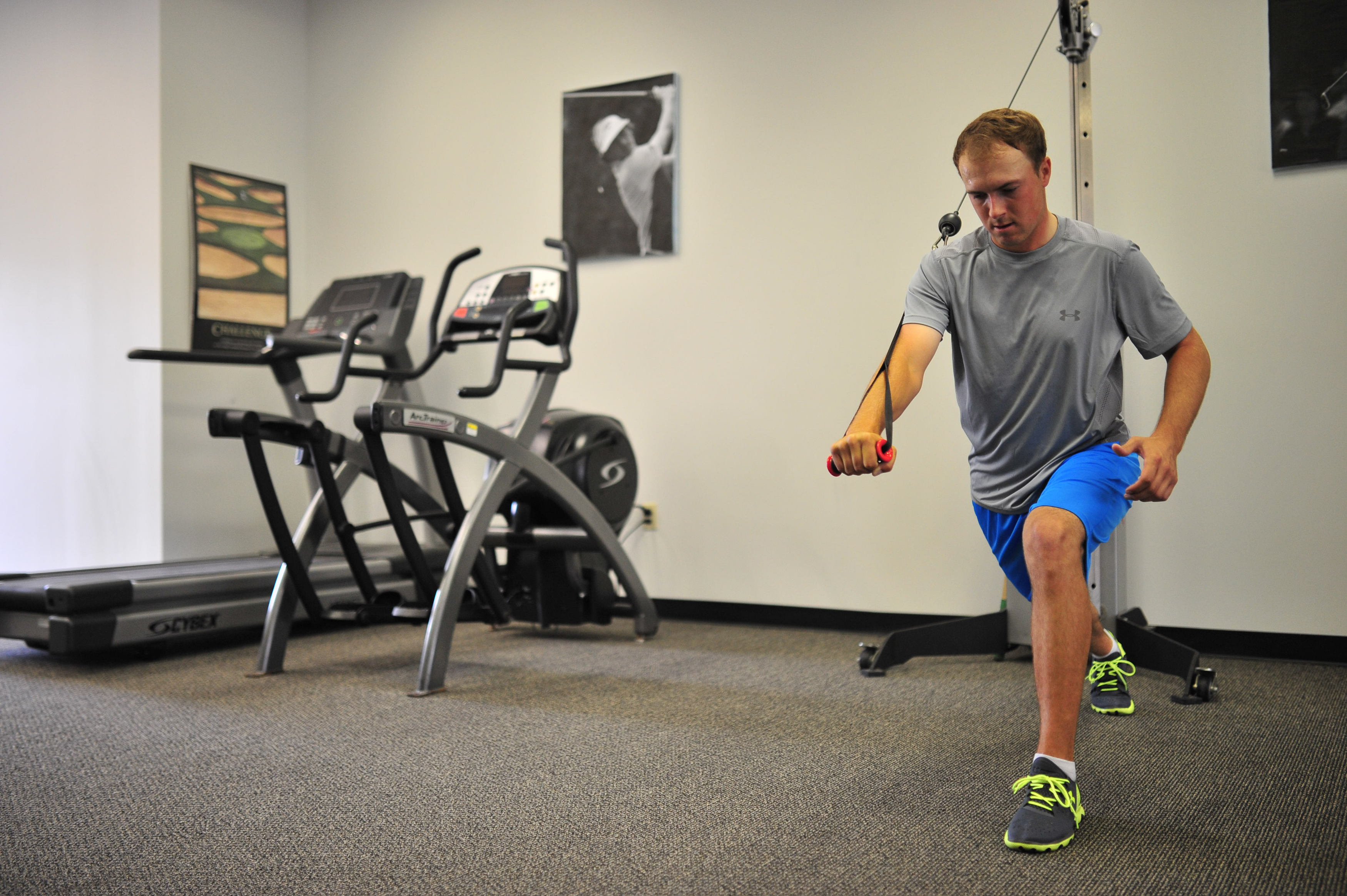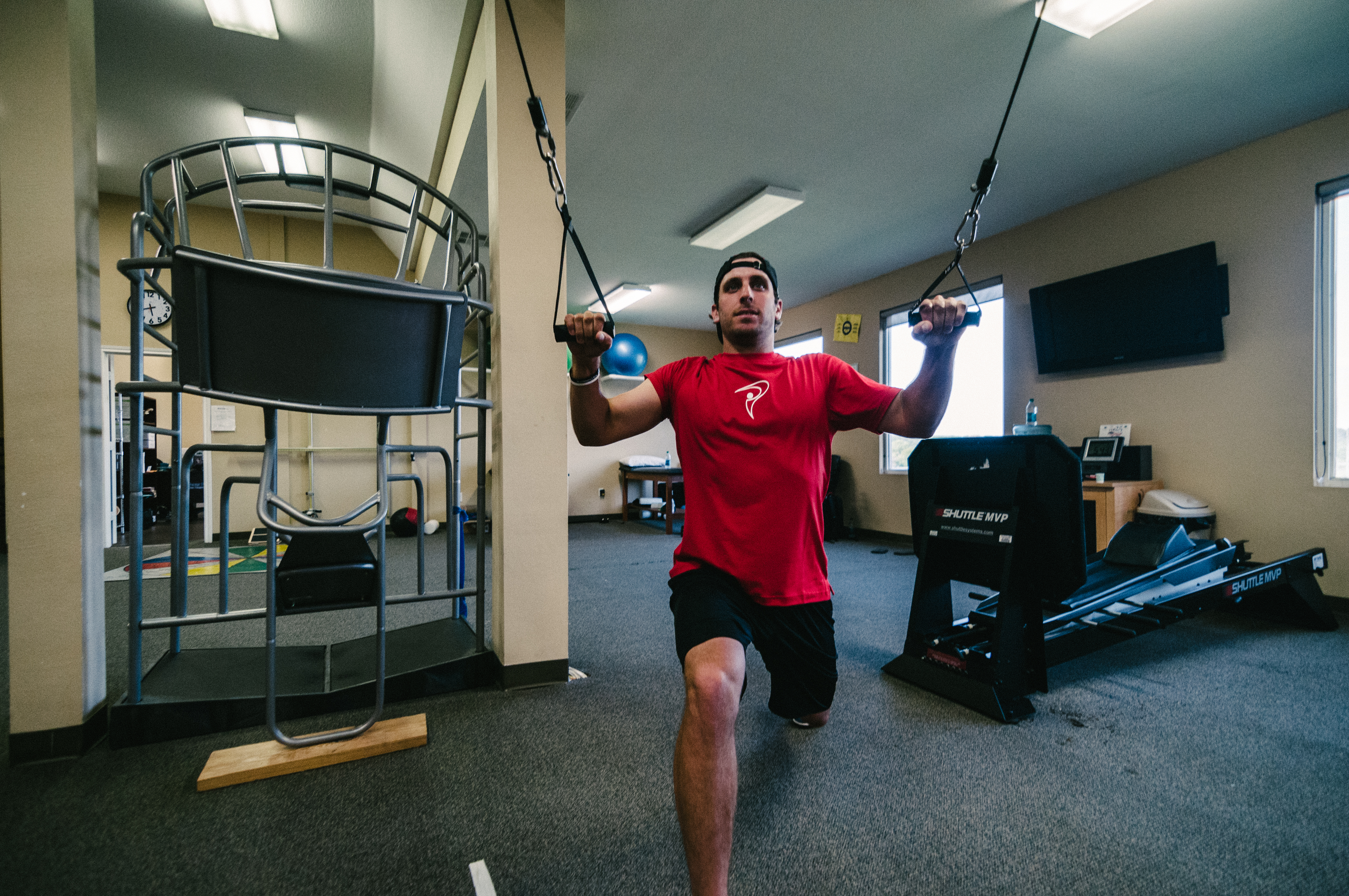IMPROVE MY GAME
Articles
Why to Choose Cable Press over Bench Press

I recently posted some content on social media highlighting the effectiveness of Cable Presses using a Dual Adjustable Pulley Cable machine, receiving boisterous responses from advocates and detractors alike.
Dual Adjustable Cables allows multi-planar movement with cable. Allows excellent opportunity for FUNCTIONAL training https://t.co/qo9vd6iJ0o
— LanceGillPerformance (@LGP_Inc) December 4, 2015
I followed up with this.
Performing cable presses is more functional bc your feet are grounded and core is braced. https://t.co/QWujWKeHY4 pic.twitter.com/K4soukpbKD
— LanceGillPerformance (@LGP_Inc) December 4, 2015
Many were very interested in the concept of pressing weight in a more sport-functional environment, while others wanted my entire familial lineage wiped off the planet permanently. How could such a simple discussion point be turned into a holy war on the movement of Chest Pressing? I want to clarify my thoughts and perhaps, ease the tension a bit.
I understand that there are two camps or philosophies for the press motion — standard bench press philosophy and functional press philosophy. And we can even include the pull/row motion into this discussion. It doesn’t make much sense to me why everyone is arguing over what is “better” when there isn’t a “better” camp to be in. My friend Jason Glass introduced a concept of “burning your benches” to share his thoughts on the standard bench press.
Jason, in my opinion, wasn’t condemning the traditional bench press, rather he was simply pointing out that we should highly consider multiple complexity movements when developing our training routines (Jason does a deep dive on the WHY behind choosing cable press over bench press on his podcast here). I would like to delve more into why I support this line of thinking.
Recent science (ie. Juan Carlos and Dr. McGill) showed a study that proves in the single press movement, athletes can muster up a maximum of 40.8% of a person’s body weight. I have seen this number tossed around a number of times. So, if the science states that an athlete can press no more than 40% of his or her body weight, what does that tell us?
To me, it asks the following questions: What sport requires you to press more than 40% of your bodyweight? Is golf one of those sports? And if your sport doesn’t require you to press more than 40% of your body weight, which of the movements will have a greater carryover affect on performance?
Through our research at TPI and with our golfing athletes, in a single arm cable press — similar to that which was tested by Juan Carlos and Dr. McGill — elite golfers are pushing roughly 25% of their body weight to an 8-rep maximum. I am sure if we pushed this out to a 1-RM, the number would probably jump to around 35-40% of body weight pressed (FYI we generally don’t test golfing athletes to a 1-RM because that isn’t as functional in our eyes and the risk of injury is higher. Our number one rule is to avoid injuring our golfers).
Reading the data that is out there, this makes sense to me. The elite athletes I am working with are probably pushing around 40% of their body weight maximally. The 8-RM shows about 25% and that is perfectly fine with me. I can tell you with certainty that if the best and longest hitters on the planet are doing this, then it is something worth looking at. And for the record, our elite golfers are pulling (rowing) roughly 30% of their body weight on an 8-RM.
Does this mean that bench press or bench rows cannot be beneficial for golfers? Absolutely not. I have used variations of the bench press and row for years with my golfers, especially the ones who are at a strength deficit.
However, if the strength deficit is not present for either push or pull, I feel that at some point you should push the envelope and add some higher level complexity to the movement pattern.
Let’s take a look at a couple of movements to discuss more in depth what I am referring to.
Cable Chest Press and Cable Row
(TPI has DOZENS of cable variations in the exercise section of their website).
Given the fact that you have enough strength to perform these maneuvers, I feel that both of these moves are more functional in the carryover to your sporting environment for golf and both allow for more functional crossover into the golf swing than by performing a standard bench row. Here are my reasons:
- More interaction with feet on ground while performing an extremity movement
- Better ability to replicate actual golfing posture while performing an extremity movement
- Higher abdominal/core activation (I have been looking for research on this!)
- For the record I also agree that bench presses when performed properly require core activation but my premise is that a standing cable press would activate the core/abdominals to a higher degree. I could be wrong and am interested in the data on this.
- Ability to train unilaterally with more abdominal, pelvic and lower quarter involvement.
- You can add rotary components to create a crossover effect into the game of golf.
With this article I am not trying to create a divide between the movements of Bench press/row and Cable press/row. Rather, my intention is to create more awareness about what is out there so that perhaps the two philosophies can co-exist. I believe strongly that the Bench Press does not create as much kinesthetic awareness of similarity to press/push motion in the golf swing as compared to the Cable Press. I also believe strongly that the Cable Press does not create as much strength as the Bench Press.

With that being said and openly understood, I hope that we can all get along in the gym and eventually point our golfing athletes in the direction of strength, function, complexity and crossover into the game they are training for.
And remember, regardless of your philosophy on the “Press,” please make sure to maintain the integrity of motion required for such a movement.

Lance Gill is the President of LG Performance, a private Golf Performance based company specializing in the betterment of golfers in the areas of; Fitness, Screening, Biomechanics, Instruction, Mental, Nutritional, Programming, and Life Coaching. My role expands from touring professionals all the way down to the earliest of Junior Development in 3 to 4 year olds. Lance is also the Co-Director of the Titleist Performance Institute Fitness Advisory Board. He shares duties with Jason Glass on establishing protocols for player development in the fields of functional movement restoration, physical screening, strength and power screening and development and for player development globally. http://www.lgperformance.com/ /